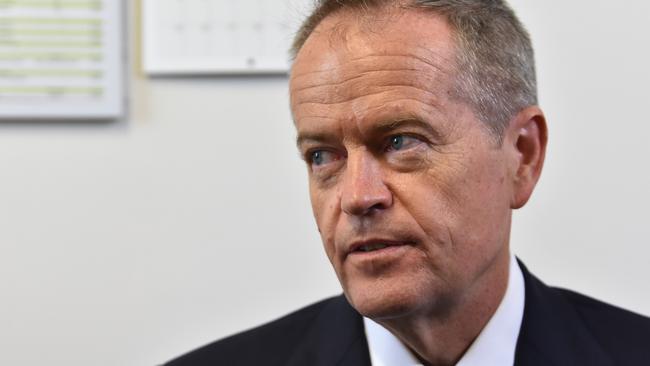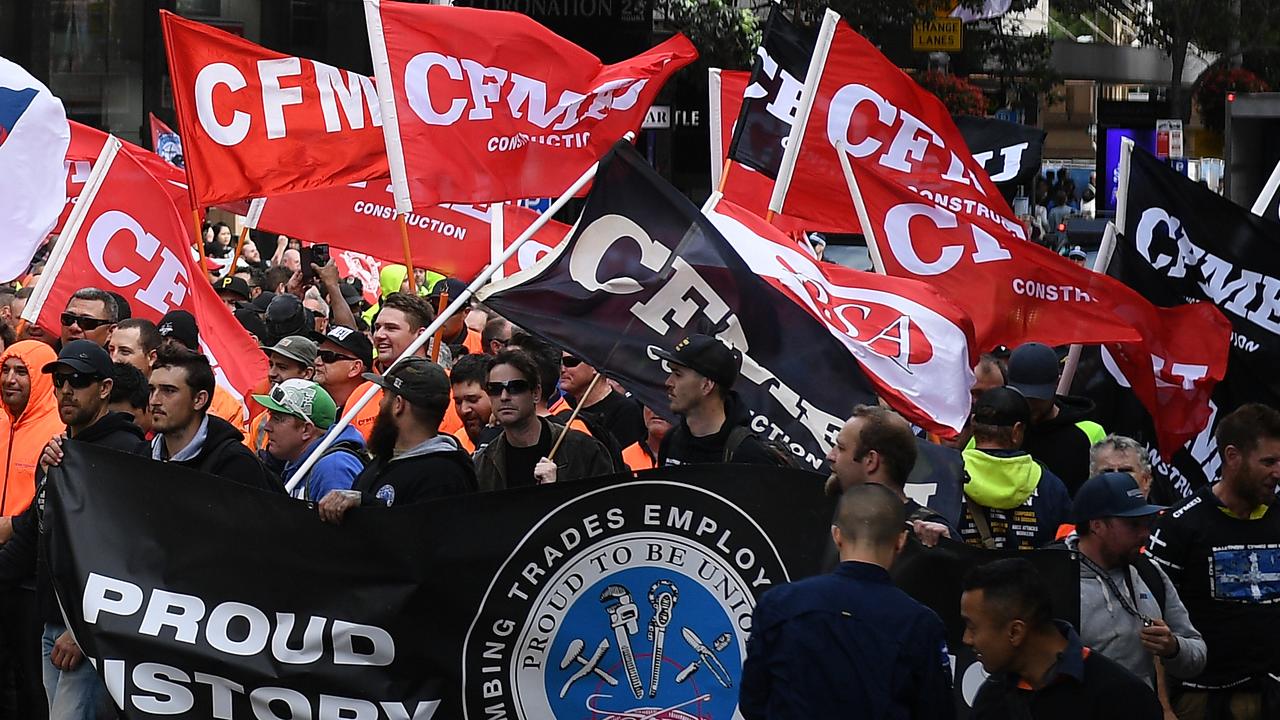Living wage for 1.2m in Labor pitch
Significant wage rises would begin flowing to 1.2m low-paid workers from next July under Bill Shorten’s ‘living wage’ policy.

Significant wage rises would begin flowing to 1.2 million low-paid workers from July next year under Bill Shorten’s “living wage” policy, which would force the Fair Work Commission to prioritise lifting workers out of poverty above business viability and jobs growth.
The Labor leader will today unveil the controversial policy, which will be strongly opposed by business, to direct the commission next year to identify a living wage target and phase in minimum wage increases for the nation’s low-paid workforce.
“We will fix the law so that the Fair Work Commission has the tools to deliver a living wage for Australia’s low-paid workers,’’ Mr Shorten said.
In a bid to blunt employer criticism, he said last night a new living wage, identified as 60 per cent of median earnings, would not “automatically flow” through to an estimated 2.3 million award-reliant workers and “will only apply to those receiving the national minimum wage”.
Labor released figures last night estimating about one in 10 workers, or 1.2 million, would be affected, including 180,200 on the adult national minimum wage, about 600,000 who are not paid exactly at the award rate, and those on junior, apprentice and disability rates of pay.
Mr Shorten said a Labor government would legislate to change the factors the commission took into account when determining the annual minimum wage increase.
“No one wins when millions of wage earners are experiencing wage stagnation. The economy isn’t working for working Australians and people are finding it harder to get ahead,’’ he said.
“Someone will have to pay”
Agriculture Minister David Littleproud said “someone is going to have to pay” for Mr Shorten’s living wage policy and that the Coalition was “pulling the right levers” on creating jobs.
“Well, it’s all shiny and it all sounds good but what it means is someone is going to have to pay for it,” he said in Hobart today.
“You’ve got to be calm, methodical, you’ve got to pull the right levers and we’ve pulled the right levers, we’ve put the levers around business to create over 1.2 million jobs in this term of government and that’s about putting money in people’s pockets.
“That’s the only way you can get a wage is there’s a job there for you to take. So you’ve got to watch these shiny deliverables that Bill Shorten is promising, because ultimately, at the end of the day, it’s going to cost someone a job and it could be you.”
Employers will accuse the ALP of interfering with the independent umpire by changing the law to secure a predetermined outcome. The Australian Industry Group said the policy would result in low-skilled workers being paid more than workers with higher skills.
The commission currently takes into account the performance and competitiveness of the economy, including productivity, business competitiveness and viability, inflation and employment growth.
It also considers relative living standards and needs of the low-paid, the promotion of social inclusion through increased workforce participation, and the principle of equal remuneration for work of equal or comparable value.
The Fair Work Act does not give primacy to any of the factors but Mr Shorten said Labor would change the law to ensure the commission’s “highest priority will be making sure no person working full-time in Australia need live in poverty”.
“We know everything is going up except people’s wages — many Australian families are struggling to make ends meet, to put food on the table and pay their bills,’’ Mr Shorten said. “The minimum wage isn’t a living wage — the minimum wage shouldn’t leave people in poverty.”
The ACTU is seeking to lift the minimum wage by 6 per cent to $762.20 a week in June and, if successful, by a further 5.5 per cent next year to bring the minimum wage into line with a living wage at 60 per cent of median earnings.
Mr Shorten said the commission would determine the living wage target before considering the timeframe over which the increase should be phased in.
He said the commission would take into account the amount of tax paid by workers, any family tax benefits or other transfers they received, the capacity of businesses to pay the living wage and the potential impact on employment, inflation and the broader economy.
“The problem with the current laws is that they require the minimum wage to be no more than a bare safety net, a change introduced by the Howard government,’’ Mr Shorten said.
“As a safety net, the minimum wage has left some full-time workers living in poverty.
“A living wage should make sure people earn enough to make ends meet, and be informed by what it costs to live in Australia today — to pay for housing, for food, for utilities, to pay for a basic phone and data plan.”
As revealed by The Australian this month, Labor’s policy seeks to deliver higher wages to the lowest-paid workers while awarding smaller pay rises to higher-paid award reliant employees. Labor said it would be up to the commission whether those higher-paid award-reliant workers received above-inflation increases.
Australian Industry Group chief executive Innes Willox has criticised the approach, saying any suggestion the commission was not giving enough weight to the needs of low-paid workers was not supported by the facts.
“There is no point in having an independent tribunal to determine wages and working conditions if parliament is going to dictate what decisions the tribunal must make or is going to impose unbalanced criteria to ensure that the tribunal’s decisions favour one party over another,’’ he said this month.
He said if the national minimum wage was moved to a level that aligned with 60 per cent of median wages, it would require an increase of more than 11 per cent.
“In many awards, the national minimum wage is the same as the lowest wage level, the second lowest wage level is about 3 per cent higher than the national minimum wage, the third lowest wage level is about 7 per cent higher and the fourth lowest wage level is about 10 per cent higher,’’ he said.
“Therefore, the proposal would result in workers with the lowest level of skill being paid more than those with higher skills or would result in employees at a number of different skill levels being paid the same amount — for example, a forklift driver being paid the same amount as an unskilled labourer.”
Mr Shorten said low wages growth had been a “hallmark of Morrison’s Liberals”.
“Getting wages moving again is vital for our economy, it’s essential for families battling rising living costs and it’s the right thing to do for the working people who help create our national wealth,’’ he said.
with Richard Ferguson





To join the conversation, please log in. Don't have an account? Register
Join the conversation, you are commenting as Logout